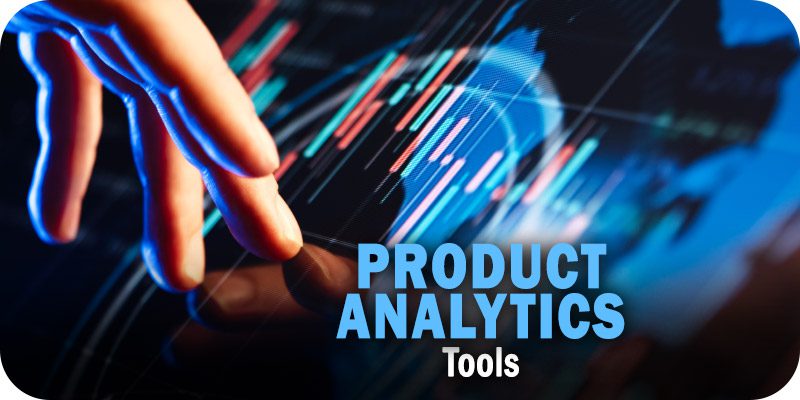Product Analytics Tools: Essentials for Evaluation & Planning


This is part of Solutions Review’s Premium Content Series, a collection of contributed columns written by industry experts in maturing software categories. In this submission, Whatfix Co-Founder and CEO Khadim Batti offers the key considerations for evaluating and planning for the adoption of product analytics tools.
 There is no question that digital transformation has accelerated in recent years. One of the consequences of this accelerated timeline is that many companies feel compelled to implement software solutions simply to avoid falling behind competitors, rather than identifying and using the best tools for the jobs they need to get done. As a result, a tremendous amount of productivity is lost by companies leveraging tools that are inefficient, or which users find difficult to use, or some combination of these factors. The key to determining what works and what doesn’t is product analytics, a hidden key to digital transformation. Robust, advanced product analytics don’t simply do a job – they tell you how a job is getting done in granular detail, including aiding in diagnostics for wherever there might be friction or bottlenecks. And they are indispensable for executing digital transformation.
There is no question that digital transformation has accelerated in recent years. One of the consequences of this accelerated timeline is that many companies feel compelled to implement software solutions simply to avoid falling behind competitors, rather than identifying and using the best tools for the jobs they need to get done. As a result, a tremendous amount of productivity is lost by companies leveraging tools that are inefficient, or which users find difficult to use, or some combination of these factors. The key to determining what works and what doesn’t is product analytics, a hidden key to digital transformation. Robust, advanced product analytics don’t simply do a job – they tell you how a job is getting done in granular detail, including aiding in diagnostics for wherever there might be friction or bottlenecks. And they are indispensable for executing digital transformation.
Product Analytics Tools
What Makes a Good Product Analytics Tool?
Product analytics are a core concern for any product-focused company. They enable product teams to understand what is working and what is not, and to double down on those features that work the best while smoothing out the rest. Regardless of the technical mechanisms used to achieve this state of affairs, however, there are three elements that are essential for any good product analytics tool.
First, they must enable teams to observe and understand how users are interacting with the application. This may seem simple (because it is) but that doesn’t mean it’s easy or unimportant. Engineers approach an app they’ve designed differently than a user arriving to it cold. Not only is it impossible for engineers to block out their intimate knowledge of how the program functions in order to get a true sense of what it might feel like to use the software as a new user, even their general knowledge as a software engineer clouds their perspective on this front. Good product analytics allow product teams to see how actual user journeys are progressing, including where common points of friction are. In many cases, these bottlenecks aren’t where product teams anticipated.
Of course, simple visibility is not enough. Product analytics tools must also contribute to an improved knowledge base that product teams can use to inform a broader strategy. Good tools do this by collecting and aggregating data to highlight trends and patterns over time that product teams might miss. Modern software environments are extremely large and complex – in a world where business processes are amplified by technology, product teams must leverage technology to enhance their own capacity to identify inefficiencies and opportunities. By collecting and aggregating user data, good product analytics tools reveal what might not be obvious at first glance, and further, contribute to a product and user knowledge base that product teams can use to build on.
Planning with Product Analytics
Planning with product analytics is a simple concept that can generate significant gains. Simply put, it is the establishment of a data-driven roadmap. Of course, many companies believe they’re doing this already. And to an extent, they are right. Every organization worth its salt uses data to inform its product decisions. However, the key to unlocking the true potential of a company’s digital transformation efforts is in what data they use, and how it is leveraged to drive greater efficiency and productivity.
Before anything else, organizations must determine what moves the needle for them in user journeys. For many, one primary factor in this regard is conversions. This is where the knowledge base comes in – with an established, granular understanding of user behavior, leaders can determine if there are any notable points of friction that affect conversions disproportionately, and address those elements first in the product roadmap. Rather than following a more traditional pathway in which a product roadmap follows a determined trajectory based on anticipated customer needs, the organization instead leveraged product analytics to identify the area most directly affecting the most important metric, and addressed that first. By highlighting the areas that have the most impact on the business, rather than the bottlenecks that are simply most obvious, enables organizations to use their resources in a more efficient way.
Any product analytics tool must offer these capabilities in the form of KPI dashboards for essential metrics, funnel analytics to understand how user journeys progress, flow maps to chart user progression through conversion stages and identify points where churn or friction generally might occur. Session segmentation is important for grouping users by location, on page duration, devices, and other determinative factors.
Final Thoughts
Software and technology investments in general are a primary differentiator among competitive companies already. Implementing these technologies are intended to generate efficiencies and eventually, greater productivity from their users. However, the rate of change that users encounter as they’re asked to adopt new tools with increasing frequency means that not all software investments generate efficiencies, due to factors along the user journey that slow and reduce adoption. At their core, product analytics amplify an organization’s capacity for this kind of change management, perhaps the most important concern for businesses over the short and medium term. Change is happening at a quicker pace than ever before, as the last several years have demonstrated, and is accelerating exponentially. Organizations that emerge on top in this new business landscape will be those that can identify inefficiencies quickly and course correct, those that are able to measure in detail what investments are working and why, and leverage data to make adjustments where they’ll have the most impact. Strong product analytics are the only way to achieve this.
































